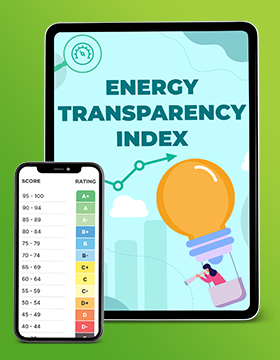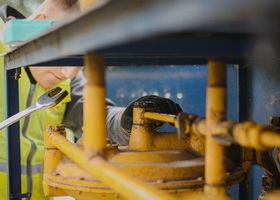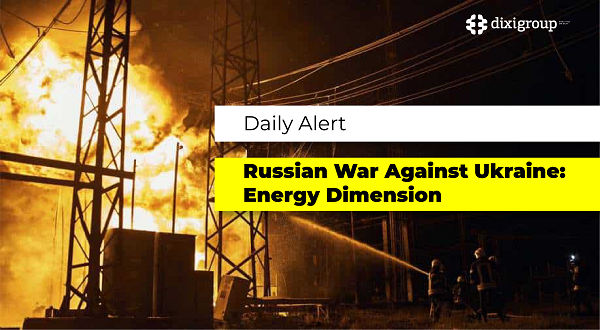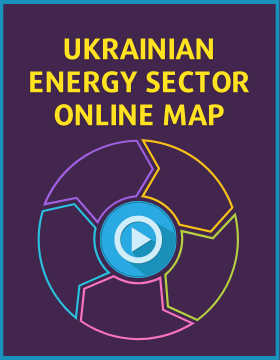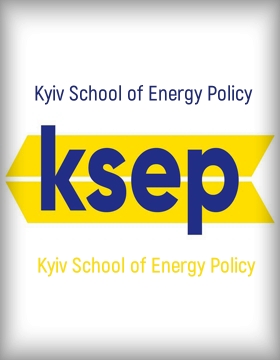Critical Resources: What Minerals and Metals Are Needed for the Energy
But what market restrictions hinder the development of "green" technologies?

Over the past 20 years, the volume of annual trade in minerals and metals critical to the energy transition has increased by about seven times - from $53 billion to $378 billion, according to the World Trade Organization. And achieving the goals of the Paris Climate Agreement (limiting the increase in the average global temperature to 2 ° C by the end of the 21st century) will mean an increase in demand for such raw materials at least four times by 2040, according to experts from the International Energy Agency (IEA). In their new study “Global Critical Minerals Outlook 2025”, they indicate that global demand for mineral resources will support the spread of “green” technologies - electric cars, solar panels, wind turbines, energy storage, network infrastructure. At the same time, increasing dependence will lead to a geographical concentration of their extraction and processing. This makes the energy transition quite vulnerable to disruptions in supply chains, domestic political and geopolitical risks. Therefore, the prices of critical minerals and metals will be subject to greater fluctuations than the prices of oil or natural gas.
Ukrainian Energy has learned what measures can reduce the pressure of these risks in order to accelerate the implementation of "green" technologies in the world.
Features of critical materials
The widespread use of "clean" energy sources usually requires more minerals than its fossil fuel-based counterparts. For example, according to the IEA, a typical electric car requires six times more mineral resources than a car with an internal combustion engine, and a wind power plant - nine times more than a gas one.
Since 2010, the average amount of minerals required to create a new energy system based on green electricity has increased by 50%. These resources are called "critical materials", meaning both minerals and metals.
The transition to low- and zero-carbon technologies has dramatically increased demand for many raw materials. For example, solar energy depends on copper, aluminum, and chromium, wind generation requires copper and zinc, geothermal energy requires nickel and chromium, and the spread of hydrogen technologies requires platinum group metals.
The IEA identifies six main critical materials: copper, lithium, nickel, cobalt, graphite, and rare earth elements. At the same time, the European Union considers 34 materials to be critical, and the US Department of Energy lists about 50 materials and metals, from aluminum (essential, like copper, for power grids) to zinc, which is used in batteries and accumulators.
Some critical materials, such as platinum, iridium, and palladium, are among the rarest on Earth. Others, such as aluminum or silicon, are among the most common. But that doesn’t mean they’re easy to access – the mining cycle is often long and complex. In addition, technologies and infrastructure for processing are developing more slowly than demand is growing. That’s why the question of where the critical resources for the energy transition are located remains extremely important for the sustainability of supply chains.
In addition, one of the key features of critical materials is that many of them do not exist in nature in a “pure” form, but are part of other minerals or ores. This means that to obtain the desired element, it is necessary to extract the ore and process it.
For example, gallium, which is needed for the production of semiconductors, is a by-product of aluminum processing. Its main sources are bauxite (aluminum ore) and zinc ore. Tellurium, which is used in the production of solar cells, is extracted from copper and other non-ferrous ores.
Of the 20 key materials for the energy transition, half are by-products, and therefore their production volumes depend on the market for the base metal (for example, aluminum, zinc or copper) and its mining volumes.
Another feature of critical materials is the high geographical concentration of both mining and processing. “Diversification is the watchword of energy security, but the world of critical materials has seen the opposite trend in recent years,” the IEA notes.
The agency estimated that, on average, for the six key materials, the share of the three largest producing countries increased from 82% in 2020 to 86% in 2024.
For example, 77% of lithium production is in Australia, Chile and China,
and 96% of its processing is in China, Chile and Argentina. 95% of gallium production is concentrated in China - along with the growth of aluminum production (China produces 60% of the world's aluminum), because gallium in the extracted concentration is mainly contained in bauxite.
According to the IEA forecast, by 2040 the demand for lithium will increase at least fivefold compared to the current level, for graphite and nickel - twice, for cobalt and rare earth metals - by 50-60%, for copper - by 30%.
Copper Networks
Renewable energy systems can use 6-12 times more copper than fossil fuel systems. Electric vehicles require at least 2-3 times more copper than conventional cars. Copper is also a key element in data centers and artificial intelligence, used in switchgear, cooling, and network infrastructure.
Despite such significant demand, copper is the least geographically concentrated of the critical materials: it is mined in 56 countries, but the leaders remain Chile (28%) and Peru (10%).
Although copper is not a rare element, this does not mean that it is easy to extract: the average time to develop a new copper mine is about 20 years.
In the field of refined copper production, China holds the lead, accounting for 45% of global production.
“White gold”
Lithium is most often used in batteries for mobile phones, laptops, digital cameras and electric vehicles. This metal is often called the “white gold” of the 21st century, because along with the growth in demand for “clean” energy, both demand and prices for it are growing.
The three largest global producers of lithium: Australia (provides about half of global production), Chile, China. China is also the largest consumer of lithium due to the large-scale production of electronics and electric vehicles.
Nickel for batteries
Nickel is key to energy transition technologies through its use in lithium-ion batteries - it provides a high capacity of the battery, which allows its size to be reduced.
More than 60% of the world's nickel production comes from Indonesia. Since 2015, its production in this country has increased 16-fold, mainly due to the development of laterite nickel ore, which accounts for about 70% of the world's nickel reserves. At the same time, such ores contain only 1.2% nickel.
Higher-quality sulfide ores with a nickel content of 3.5% are concentrated in Australia, Canada, China and Russia.
"Metal of the century"
Cobalt - the "metal of the century" - is important for the energy transition, primarily as a component in lithium-ion batteries. It prevents overheating, making the battery safer, and increases energy density - critically important for electric vehicles.
The demand for cobalt has increased dramatically due to the development of electric vehicles: while a smartphone battery contains only a few grams of cobalt, the battery of an average electric vehicle contains about 8 kg. At the same time, this metal is one of the most geographically concentrated critical materials.
Almost three quarters of the world's cobalt production (and about half of all explored reserves) is in the Democratic Republic of Congo (DRC). The top three also include Indonesia (12%) and Russia (5%).
However, the world's largest cobalt producer is China, which provides 77% of global processing, receiving raw materials from the DRC under the "infrastructure for resources" agreement.
Graphite for "clean" engines
Graphite, like cobalt, has become a key element of the energy transition with the spread of electric vehicles. It is critical for the production of batteries in "clean" vehicles. In particular, the average electric car contains from 50 to 70 kg of graphite.
China is the largest producer of natural graphite in the world. It accounts for about three quarters of the world's production, and in the processing sector - about 90%.
Graphite can also be obtained synthetically from fossil fuels, but the carbon emissions are 3-5 times higher than when mining and processing natural graphite.
Elements of great importance
Rare earth elements are a group of 17 metals that are indispensable in many high-tech devices: smartphones, hard drives, electric cars.
One of the most important applications is permanent magnets, which retain their magnetic properties for a long time. Without them, wind turbines cannot rotate and electric motors do not work.
Despite their name, rare earth elements are not rare. They are found in many countries. However, they are never found in high concentrations, often mixed with each other or with radioactive elements. This makes them difficult to extract and purify.
The rare earth element market, as noted by the IEA, is dominated by China. This country accounts for almost 70% of global production and about 90% of processing. Other large producers, which occupy much smaller shares in the market, are the United States, Myanmar and Australia.
Energy transition risks
The high geographical concentration of critical materials is exacerbated by the concentration of companies that control the supply of raw materials.
For example, almost half of the world's cobalt production is controlled by three companies - international trader Glencore, Kazakhstan's Eurasian Resources Group and China's CMOC, while half of lithium production is controlled by the US company Albemarle, China's Tianqi Lithium and Chile's SQM. The concentration is even more pronounced in the extraction of rare earth metals, almost half of which is controlled by China Northern Rare Earth.
“This creates an oligopoly in markets that are key to a successful energy transition from fossil fuels to renewables,” write economists at the Bank of France in their study “Capital in the 21st Century: Who Owns the Capital of Companies Producing the Most Critical Raw Materials?”
IEA analysts note that existing market restrictions make the spread of “green technologies” quite vulnerable to supply chain disruptions, as well as sensitive to domestic political and geopolitical risks. However, there are ways to mitigate, if not eliminate, these risks.
In particular, the IEA draws attention to the need to develop a comprehensive strategy in three areas. The first is to reduce the dependence of “green” industries on resources through investments in technologies that reduce the use of critical materials. Second, countries and consumer companies should make efforts to diversify supplies by scaling up processing, as well as finding and developing new deposits (for example, the US is developing domestic cobalt mining in Minnesota and Idaho). Ultimately, risks will be mitigated by creating international alliances with friendly partners who will strengthen “supply diplomacy”.
“Diversification will not happen by itself - clear policies and partnerships are needed… It is necessary to combine countries rich in resources with those with processing and final product production capacities,” the IEA concludes.
Svitlana Dolinchuk, specially for “Ukrainian Energy”

